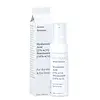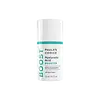What's inside
What's inside
 Key Ingredients
Key Ingredients

 Benefits
Benefits

 Concerns
Concerns

No concerns
 Ingredients Side-by-side
Ingredients Side-by-side

Water
Skin ConditioningNiacinamide
SmoothingGlyceryl Oleate Citrate
EmulsifyingSimmondsia Chinensis Seed Oil
EmollientCaprylic/Capric Triglyceride PEG-4 Esters
EmollientHydrolyzed Hyaluronic Acid
HumectantButyrospermum Parkii Butter
Skin ConditioningCetearyl Alcohol
EmollientSodium Hyaluronate
HumectantPhospholipids
Skin ConditioningGlycine Soja Oil
EmollientGlycolipids
Skin ConditioningGlycine Soja Sterols
EmollientXanthan Gum
EmulsifyingLecithin
EmollientSclerotium Gum
Emulsion StabilisingPullulan
Sodium Citrate
BufferingPotassium Sorbate
PreservativePiroctone Olamine
PreservativeCitric Acid
BufferingWater, Niacinamide, Glyceryl Oleate Citrate, Simmondsia Chinensis Seed Oil, Caprylic/Capric Triglyceride PEG-4 Esters, Hydrolyzed Hyaluronic Acid, Butyrospermum Parkii Butter, Cetearyl Alcohol, Sodium Hyaluronate, Phospholipids, Glycine Soja Oil, Glycolipids, Glycine Soja Sterols, Xanthan Gum, Lecithin, Sclerotium Gum, Pullulan, Sodium Citrate, Potassium Sorbate, Piroctone Olamine, Citric Acid
Water
Skin ConditioningGlycerin
HumectantSodium Hyaluronate
HumectantHyaluronic Acid
HumectantCeramide NP
Skin ConditioningCeramide AP
Skin ConditioningCeramide EOP
Skin ConditioningPhytosphingosine
Skin ConditioningYeast Extract
Skin ConditioningAdenosine
Skin ConditioningCholesterol
EmollientPanthenol
Skin ConditioningSilanetriol
Butylene Glycol
HumectantSodium Lauroyl Lactylate
EmulsifyingCarbomer
Emulsion StabilisingXanthan Gum
EmulsifyingCitric Acid
BufferingSodium Hydroxide
BufferingPolysorbate 20
EmulsifyingEthylhexylglycerin
Skin ConditioningPhenoxyethanol
PreservativeWater, Glycerin, Sodium Hyaluronate, Hyaluronic Acid, Ceramide NP, Ceramide AP, Ceramide EOP, Phytosphingosine, Yeast Extract, Adenosine, Cholesterol, Panthenol, Silanetriol, Butylene Glycol, Sodium Lauroyl Lactylate, Carbomer, Xanthan Gum, Citric Acid, Sodium Hydroxide, Polysorbate 20, Ethylhexylglycerin, Phenoxyethanol
Ingredients Explained
These ingredients are found in both products.
Ingredients higher up in an ingredient list are typically present in a larger amount.
Citric Acid is an alpha hydroxy acid (AHA) naturally found in citrus fruits like oranges, lemons, and limes.
Like other AHAs, citric acid can exfoliate skin by breaking down the bonds that hold dead skin cells together. This helps reveal smoother and brighter skin underneath.
However, this exfoliating effect only happens at high concentrations (20%) which can be hard to find in cosmetic products.
Due to this, citric acid is usually included in small amounts as a pH adjuster. This helps keep products slightly more acidic and compatible with skin's natural pH.
In skincare formulas, citric acid can:
While it can provide some skin benefits, research shows lactic acid and glycolic acid are generally more effective and less irritating exfoliants.
Most citric acid used in skincare today is made by fermenting sugars (usually from molasses). This synthetic version is identical to the natural citrus form but easier to stabilize and use in formulations.
Read more about some other popular AHA's here:
Learn more about Citric AcidSodium Hyaluronate is hyaluronic acid's salt form. It is commonly derived from the sodium salt of hyaluronic acid.
Like hyaluronic acid, it is great at holding water and acts as a humectant. This makes it a great skin hydrating ingredient.
Sodium Hyaluronate is naturally occurring in our bodies and is mostly found in eye fluid and joints.
These are some other common types of Hyaluronic Acid:
Learn more about Sodium HyaluronateWater. It's the most common cosmetic ingredient of all. You'll usually see it at the top of ingredient lists, meaning that it makes up the largest part of the product.
So why is it so popular? Water most often acts as a solvent - this means that it helps dissolve other ingredients into the formulation.
You'll also recognize water as that liquid we all need to stay alive. If you see this, drink a glass of water. Stay hydrated!
Learn more about WaterXanthan gum is used as a stabilizer and thickener within cosmetic products. It helps give products a sticky, thick feeling - preventing them from being too runny.
On the technical side of things, xanthan gum is a polysaccharide - a combination consisting of multiple sugar molecules bonded together.
Xanthan gum is a pretty common and great ingredient. It is a natural, non-toxic, non-irritating ingredient that is also commonly used in food products.
Learn more about Xanthan Gum